- Devotions and Prayers
- Devotions and Prayers
Prayers for Priests
- Devotions and Prayers
Prayer to the Infant Jesus
- Devotions and Prayers
Novena to the Divine Infant King
- Devotions and Prayers
Prayer to the Virgin: Remedy Against Evil Spirits
- Devotions and Prayers
Novena to the Immaculate Conception
- Devotions and Prayers
Perpetual Novena in Honor of St. Therese of the Child Jesus
- Institute
Sister Adorers

For more information or to get in touch with the Sisters, please visit their website
To support the Sisters, you can donate at the link below:
Life and Spirit
Life of Prayer
Founded in 2001 to shine forth the adoration of God for His greater glory, the first and primary apostolate of a Sister Adorer is the chant of the Divine Office in common and adoration of the Blessed Sacrament.
Holy Mass celebrated in the usus antiquior is the source and summit of a sister’s day and her whole life, a life which should be nothing other than a continuous offering to God, in the model of the Holy Host in the Divine Sacrifice.
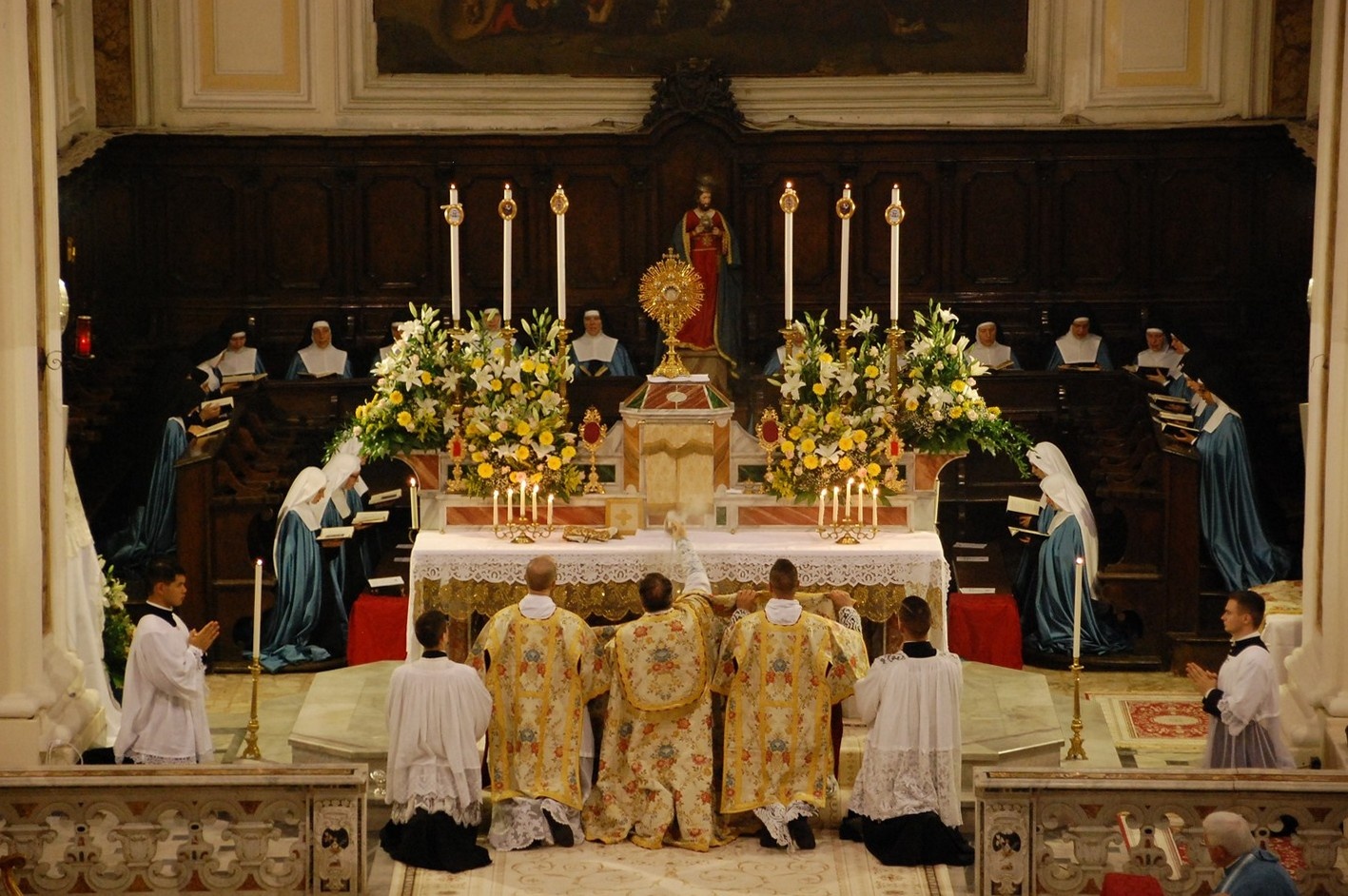
Following Holy Mass each morning, the Blessed Sacrament is exposed in the monstrance, His humble throne, where the Sisters take turns throughout the day for an hour of meditation in the morning and at least a half-hour of silent adoration in the afternoon. The afternoon continues with a time of spiritual reading, the holy rosary recited in common, and solemn Benediction every evening. Holy Mass and adoration cannot be separated from the Church’s own prayer, the Divine Office. In union with the Canons and oblates of the Institute, the sisters gather in community to sing Lauds, Vespers, and Compline.
Work and Studies
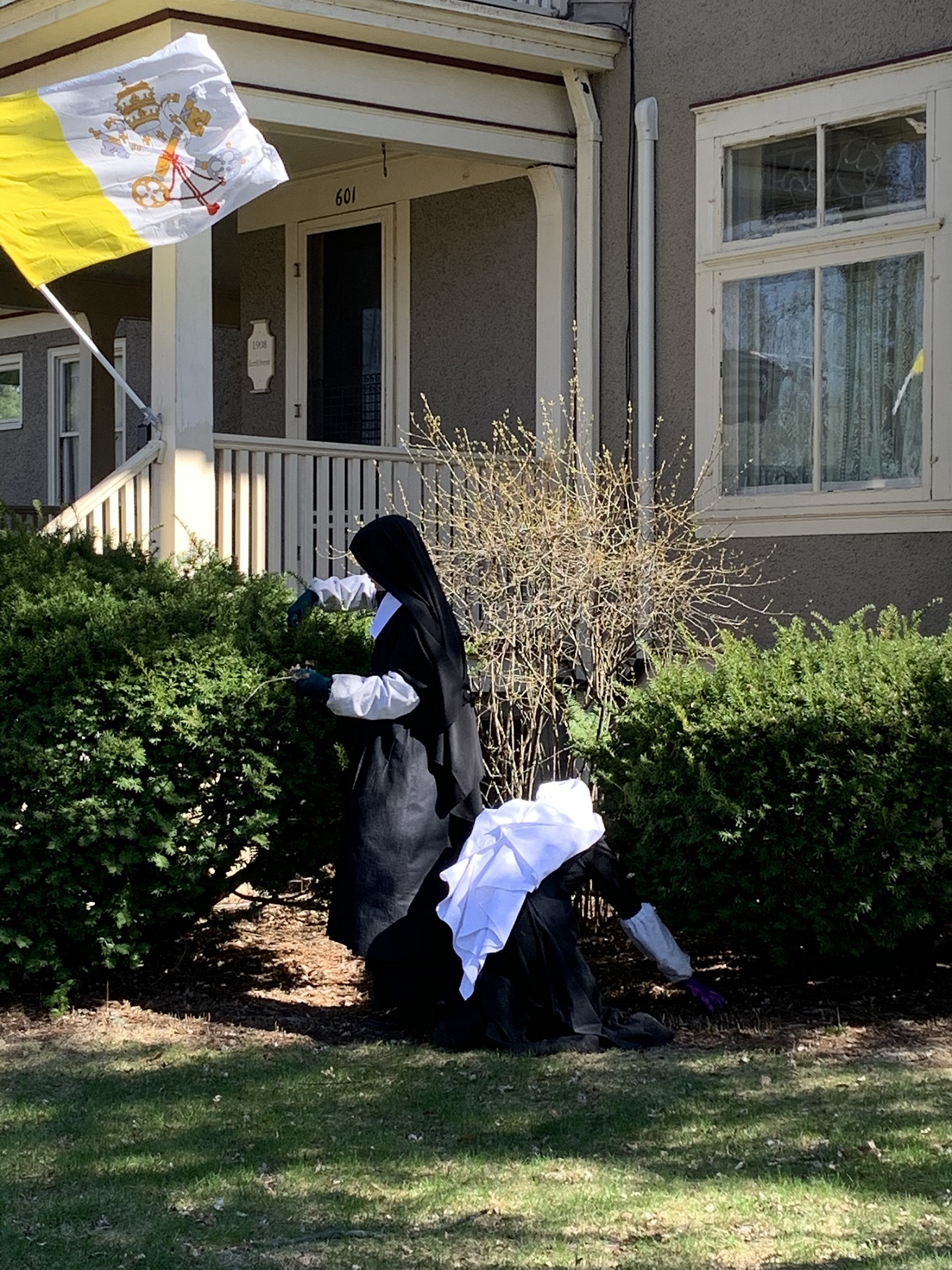
For a consecrated soul, the life of prayer does not end when exiting the chapel; rather, the loving adoration of God and His Holy Will continues and deepens throughout the day. In addition to daily chores like cooking, laundry, and gardening, the sisters may also work on art, embroidery, quilling, and sewing liturgical vestments. A sister might give herself to creating delicate, detailed lace one hour, and then don her work habit to paint a room in the afternoon!
Along with prayer and work, the sisters have daily studies. As Saint Francis de Sales teaches, “Knowledge is required for the production of love, for we can never love what we do not know.” The studies that begin in postulancy continue throughout the novitiate and a sister’s entire religious life, including classes on Church doctrine and history, Latin, Sacred Scripture, and more, taught by the Canons of the Institute.
The sisters also gather together every day for continued formation and repetition of Gregorian chant, applying themselves to the gentle and rounded technique taught by the Abbey of Solesmes, where the life of prayer is brought forth out of every word and note.
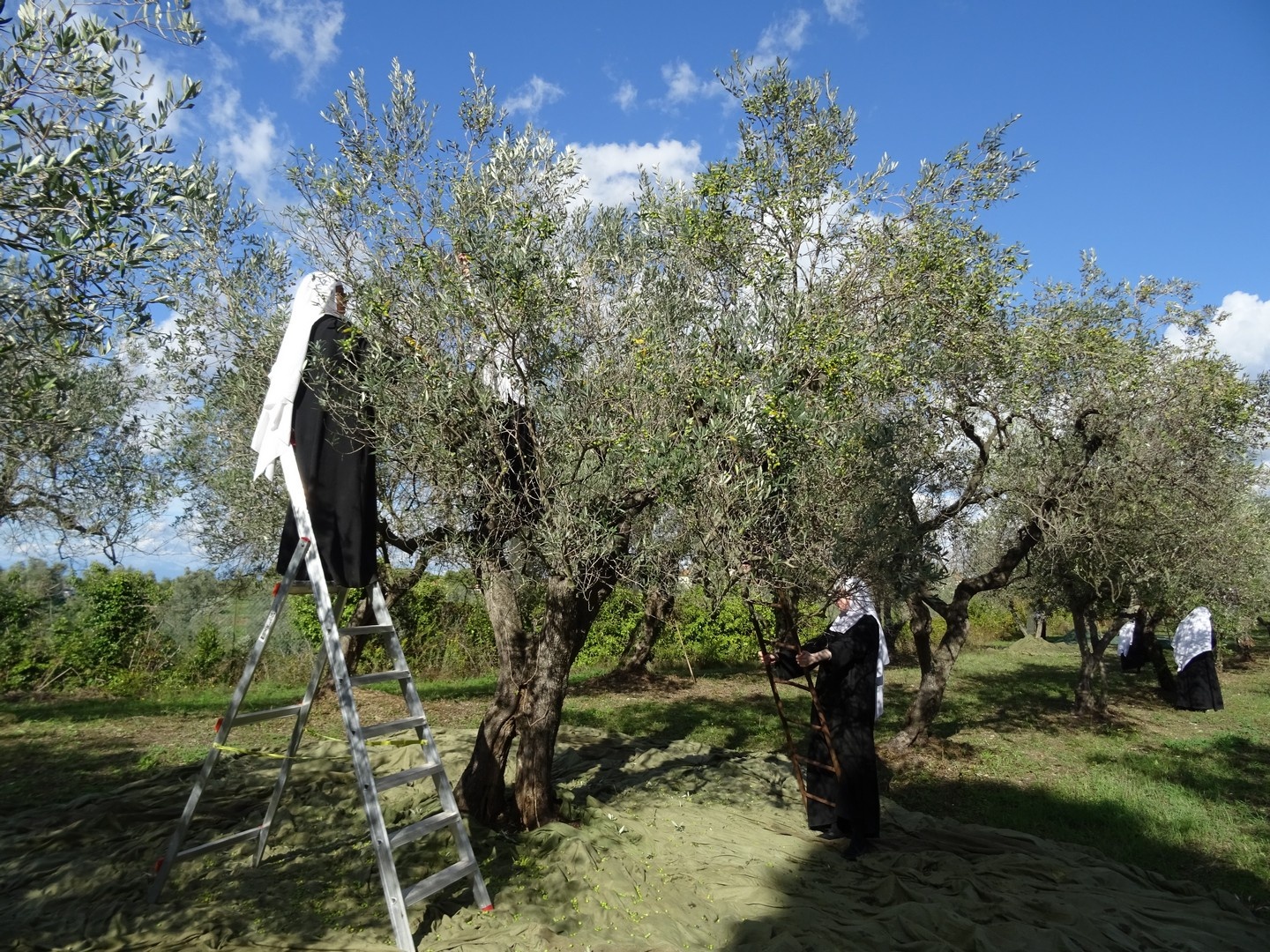 |
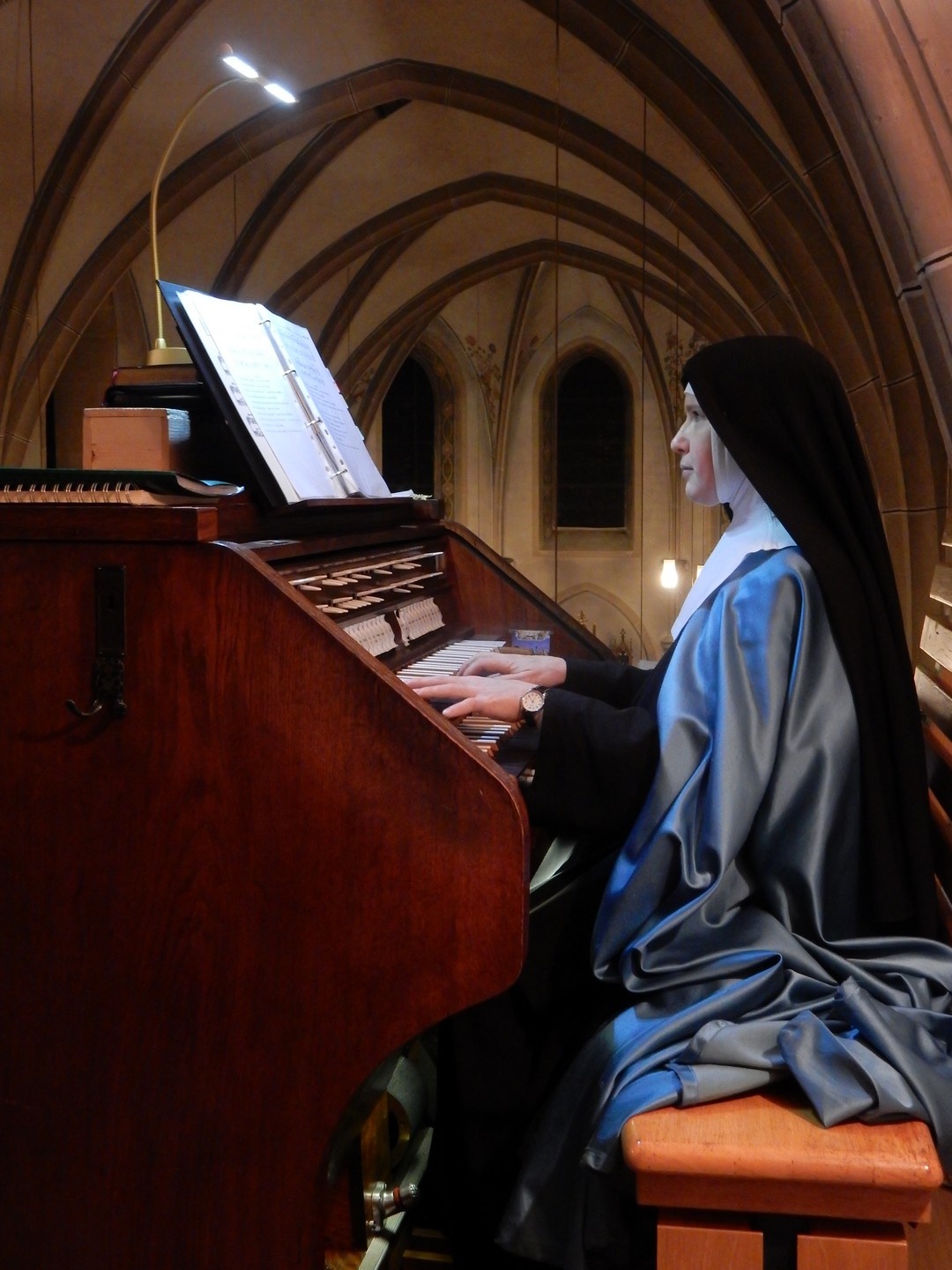 |
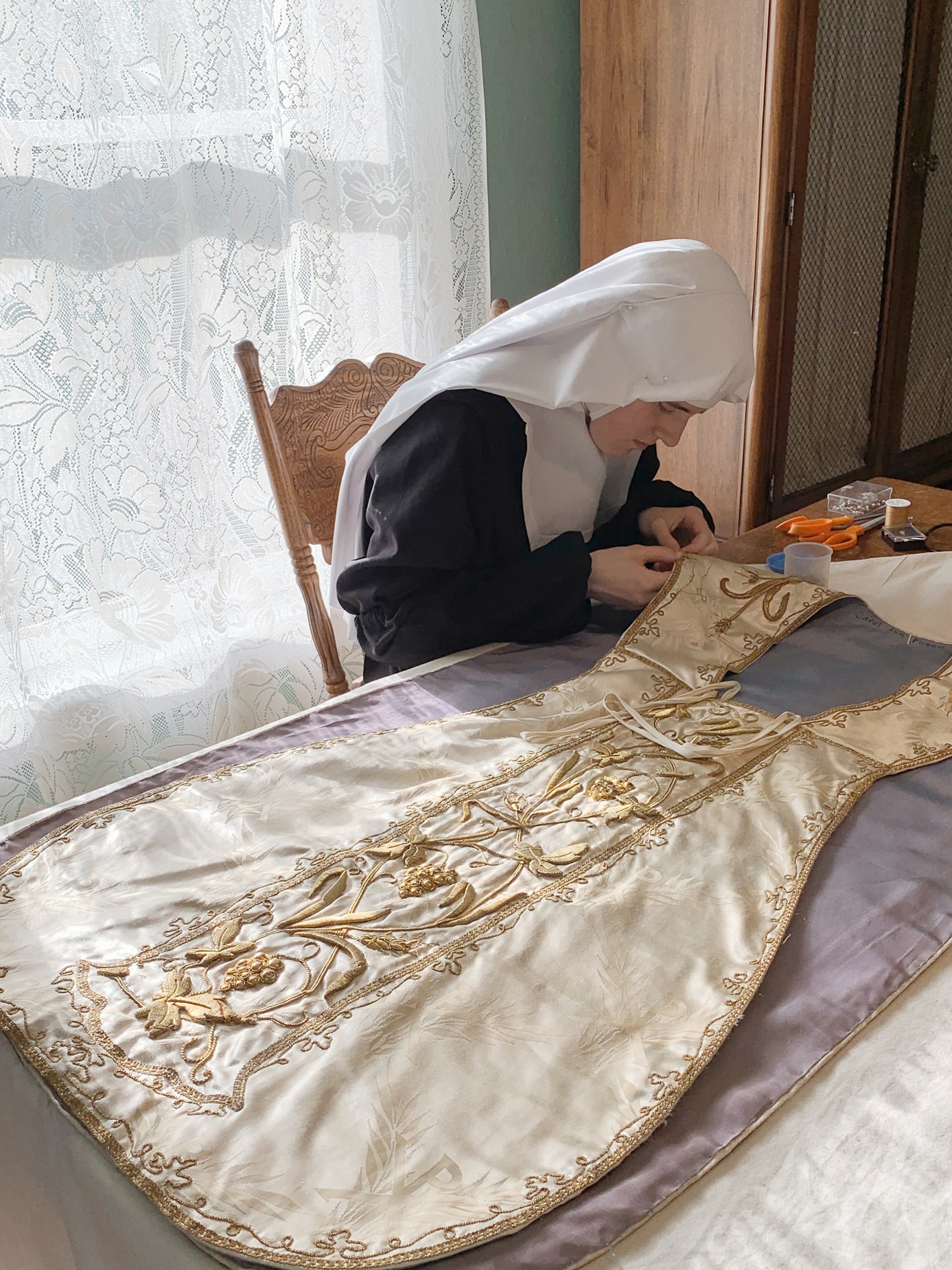 |
Apostolate
Being a semi-contemplative, semi-active community, the professed Sisters give themselves to apostolic work such as teaching catechism and teaching in schools of the Institute, preparing guest rooms for retreatants, and serving wherever the Canons need their assistance, according to God’s Providence. The goal is not only the material good; rather, the sisters seek to share their life of adoration with the world around them, so that Christ the King reigns in every heart and in every aspect of society.
The Adorers of the Royal Heart have the special vocation to pray for the sanctification of priests, especially those of the Institute of Christ the King, and to support them in their apostolates, through their work but most of all through their life consecrated and offered to God.
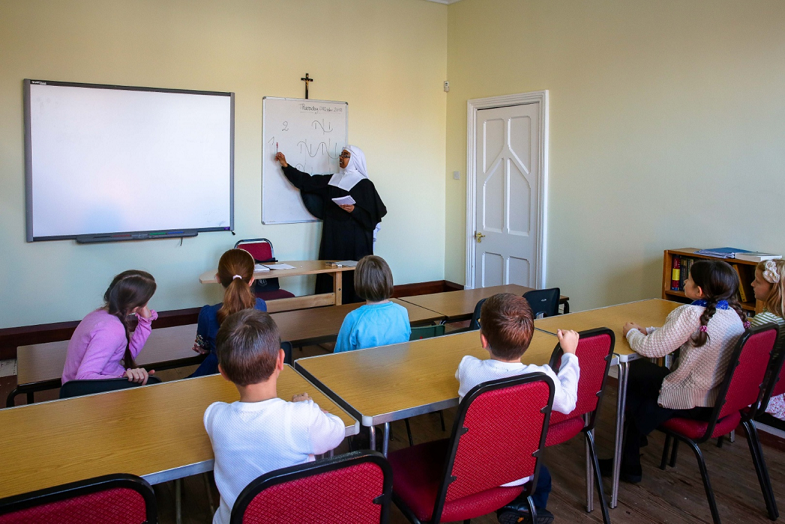 |
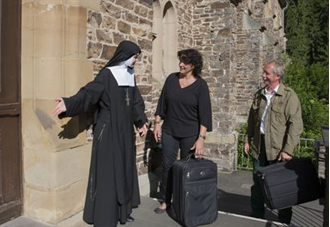 |
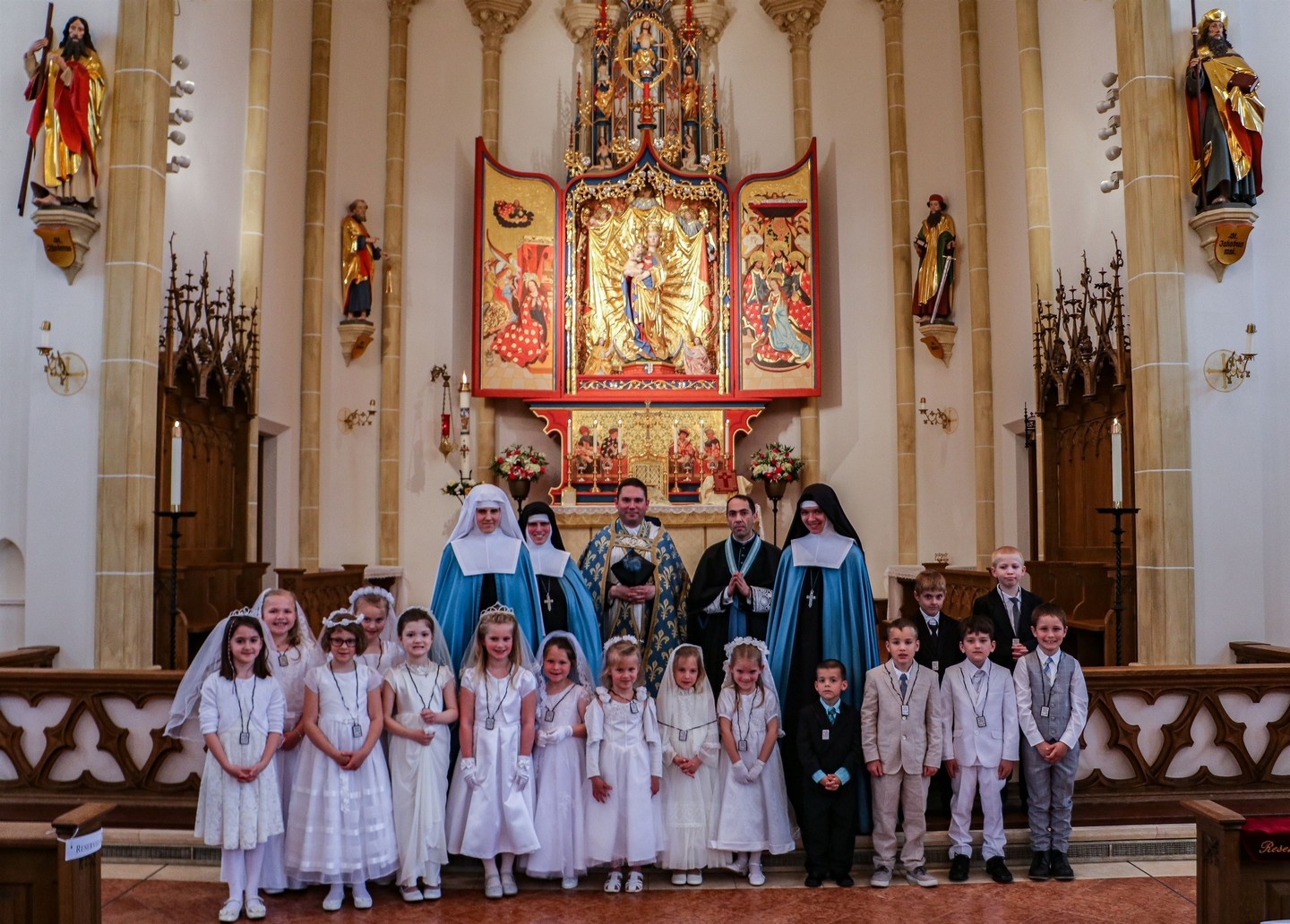 |
Formation and Discernment
Formation
Upon entering the Sister Adorers, a young lady is called a postulant. Wearing a simple black dress and the postulant cross, without vows or religious name, postulancy is a year of discernment in which the young lady begins to learn the life of a Sister Adorer at the house of novitiate in Naples, Italy.
At the end of this time of initial discernment, following the guidance of her superiors and spiritual director, she will be invited to receive the Holy Habit and enter the Novitiate. It is during this ceremony that the sister receives her new religious name. The novitiate is a period of several years dedicated to deepening the interior life and life of virtue, particularly the virtues of humility, obedience, generosity, and charity, in further discernment and in preparation to offer herself entirely to God through the holy vows.
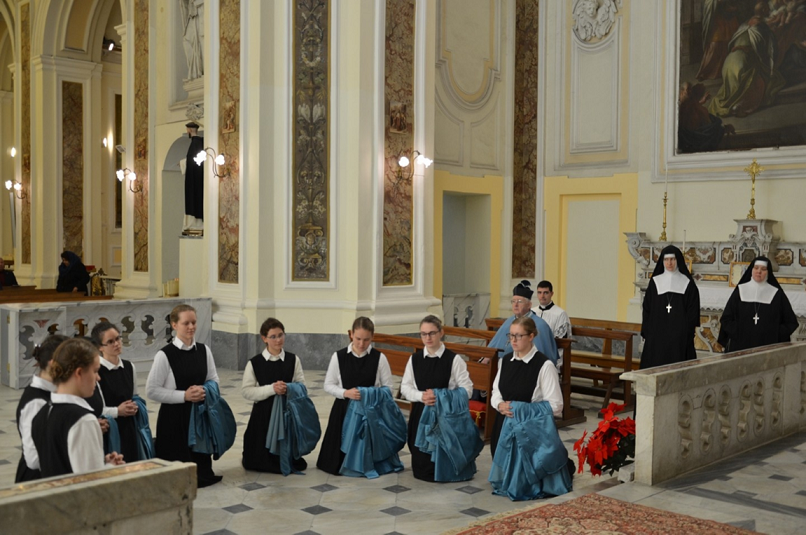 |
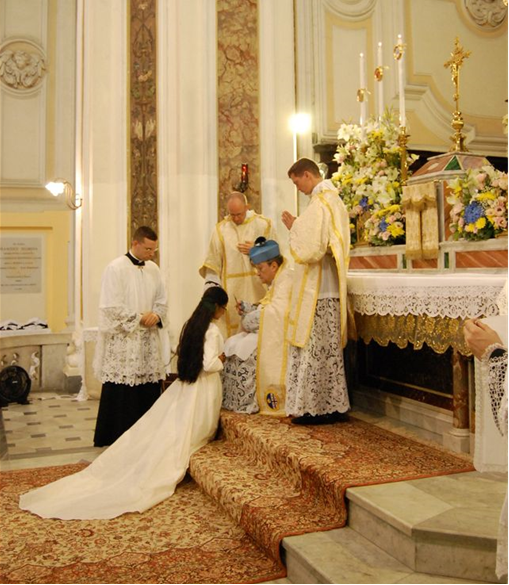 |
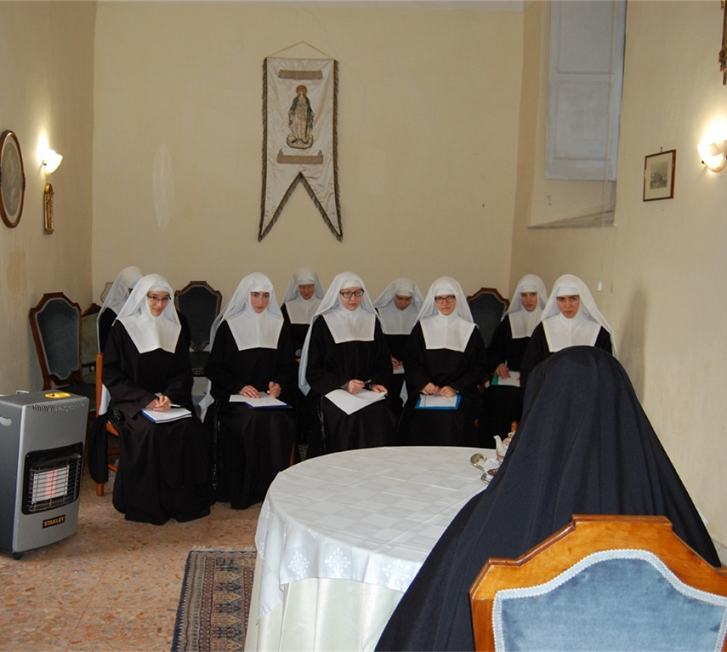 |
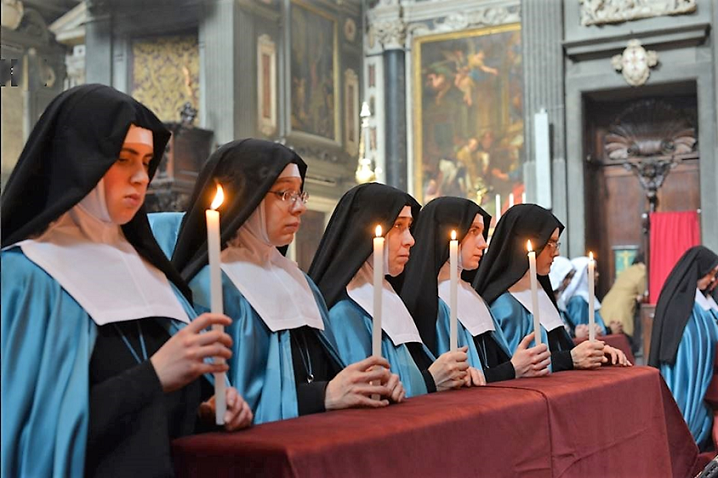 |
Discernment
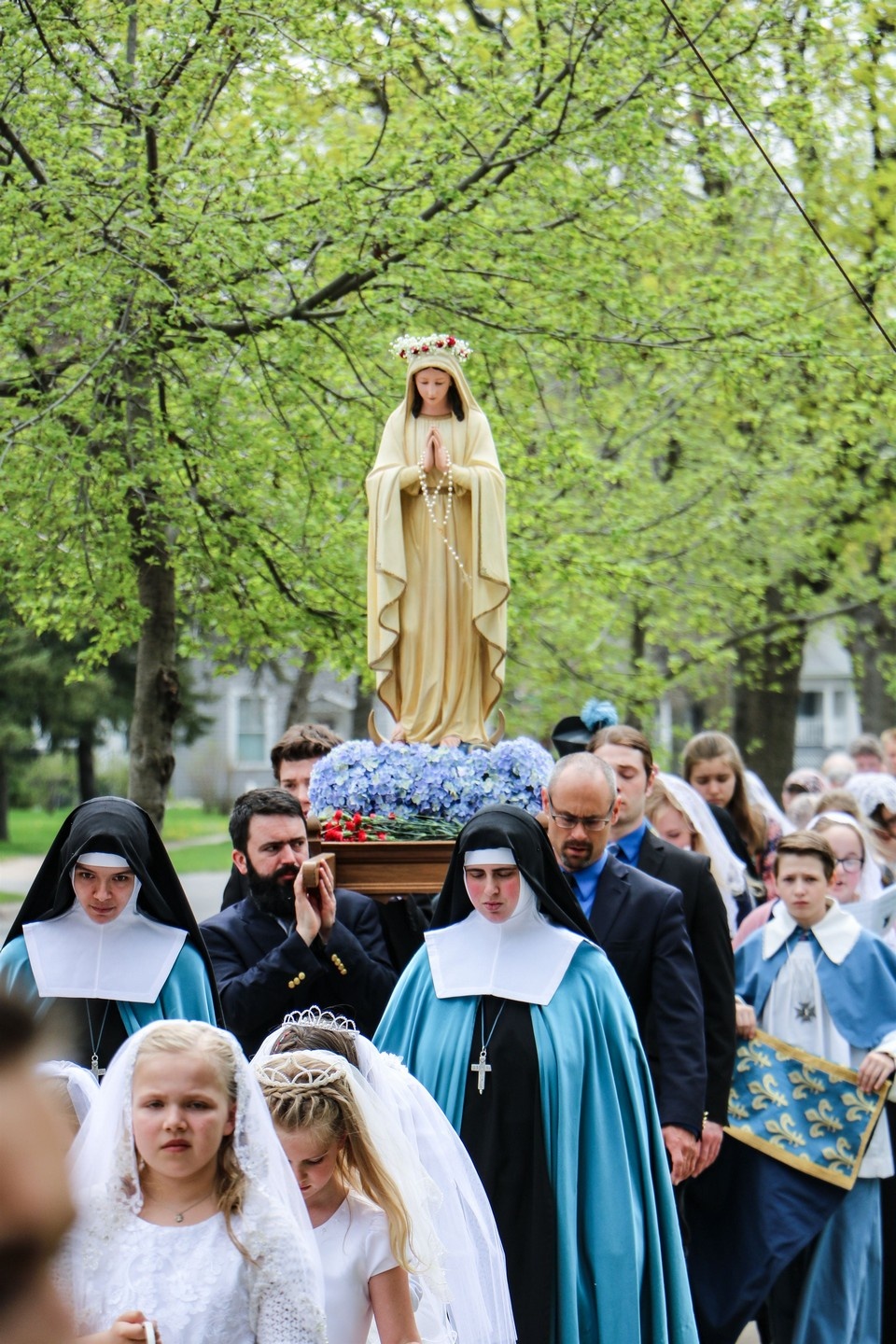
For more information on discerning a vocation with the Sister Adorers, please contact them on their website to learn more.
To discern a religious vocation with the Sister Adorers, a young lady must already be 18 years old. For girls who are not yet 18, the recommendation is to pray and give oneself to all the virtues appropriate for a young lady in her current state in life: obedience and respect to parents, charity toward siblings, faithfully fulfilling chores and studies. It is through the practice of little virtues in the here and now that a soul can best prepare herself for responding to whatever vocation God calls her to in the future.
Girls and young ladies under 18 might also be interested in the Institute of Christ the King’s summer camps: institute-christ-king.org/1185-save-the-date-summer-activities
Our Houses
House of Saint Thomas Aquinas, Naples
This ancient Dominican monastery surrounded by orange groves and lemon trees became home to our ever-growing novitiate in the year 2019. During their years at the house of novitiate, the sisters draw rich spiritual graces and receive a solid doctrinal and religious formation to prepare them for holy vows and to then go to one of our apostolic houses.
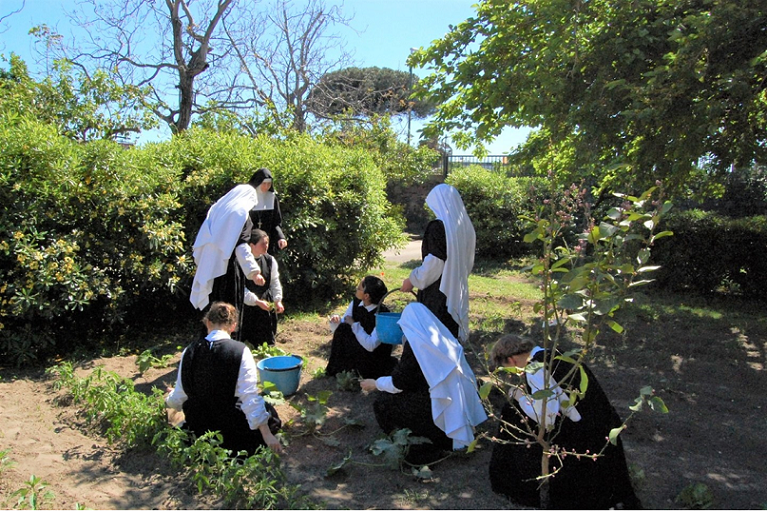 |
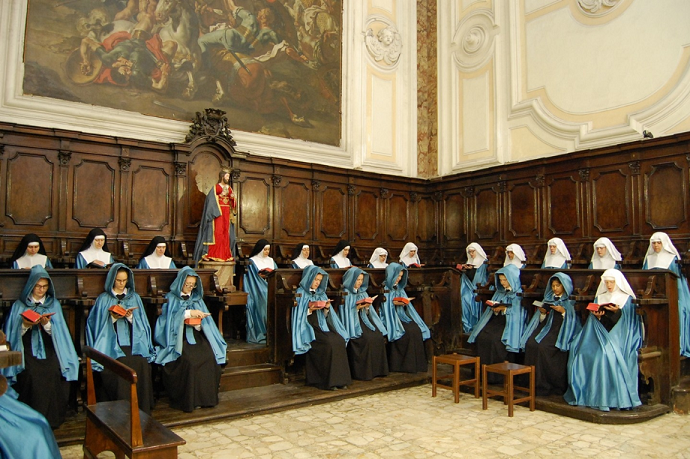 |
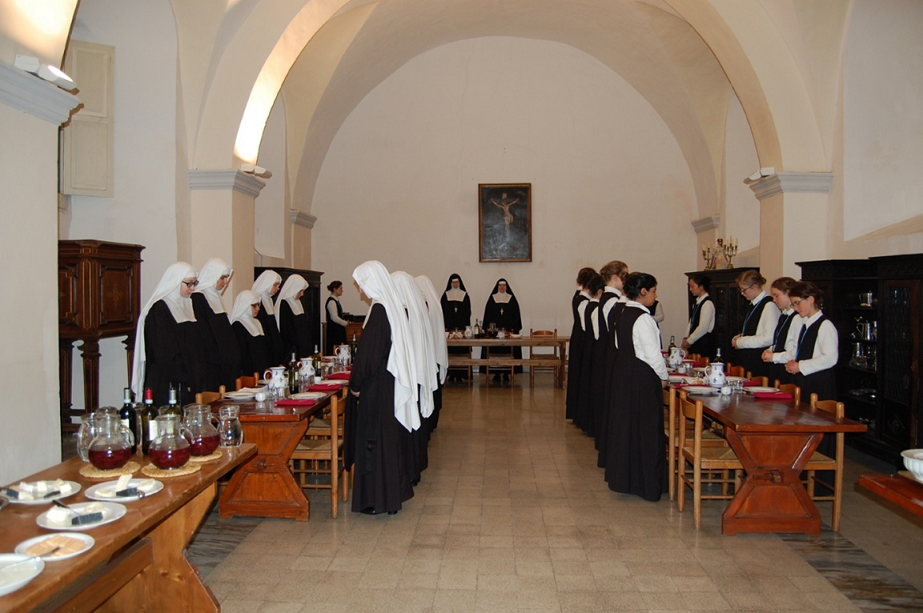 |
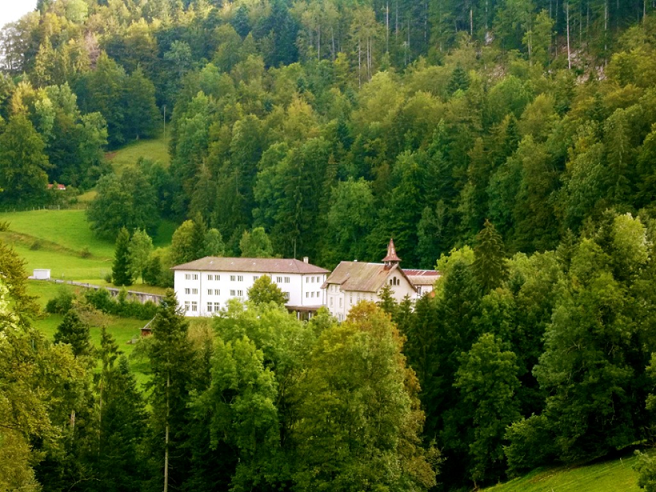
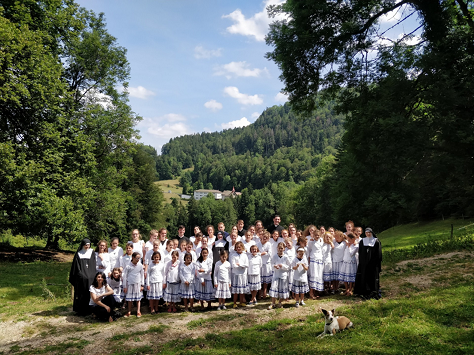
House of the Eucharistic Heart, Switzerland
Nestled in the mountainside overlooking the French border, this beautiful convent was formerly a boys’ school run by the Fathers of the Blessed Sacrament. The building that had once housed the boarding school has now been transformed into a spacious and comfortable guest house: an ideal spot for recollection, spiritual retreats, and of course — summer camps! The sisters in Switzerland are also dedicated to the traditional art of quilling.
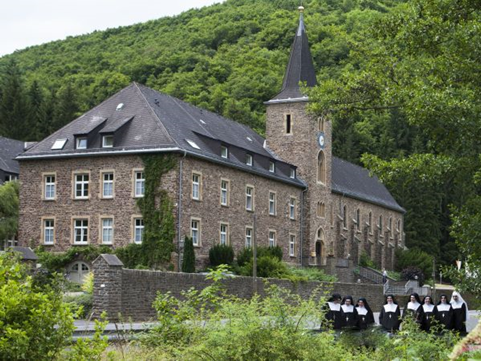
Maria Engelport, Germany
In the Trier region of Germany, only minutes from the Moselle River, this Marian Shrine dates back to the year 1220. With the Blessed Sacrament exposed all day, the presence of several multi-lingual canons, and the sisters’ hospitality, this convent welcomes a great number of guests and retreatants, families and priests, who come to spend a few days in the company of Our Lord in this peaceful wooded valley.
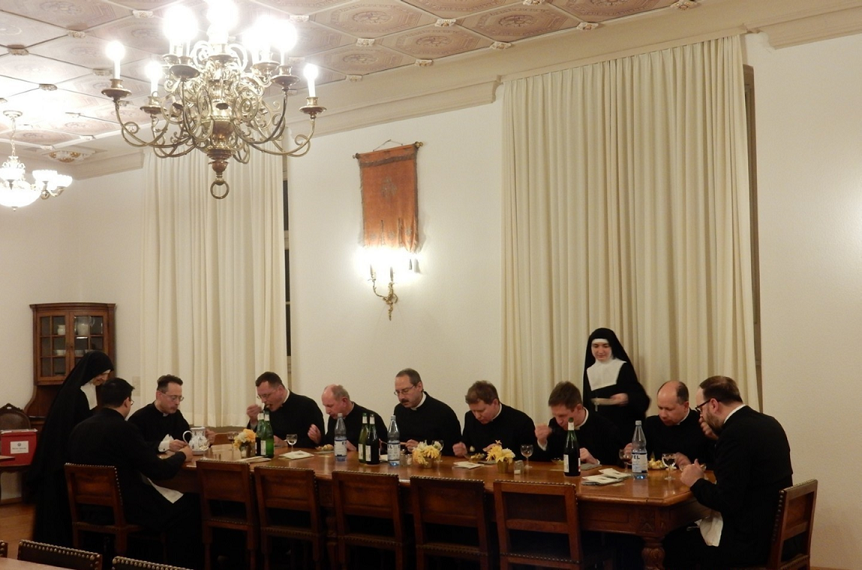 |
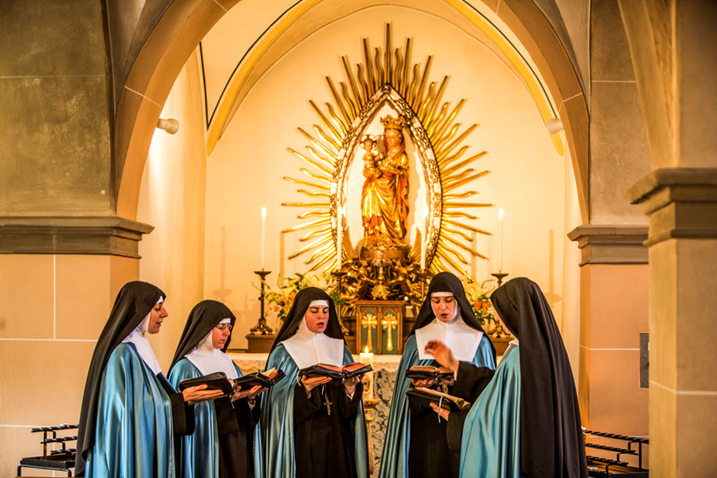 |
House of Saint Augustin, Preston, England
The Adorers of the Royal Heart arrived in England in the town of Preston (“Priest-town”) in 2018. Their life is centered on adoration of the Blessed Sacrament and singing Holy Mass and the Divine Office in the multiple Institute churches in the region. By God’s Holy Providence, the sisters also teach classes at St Benedict Academy, the Institute’s local school for children aged 5-17.
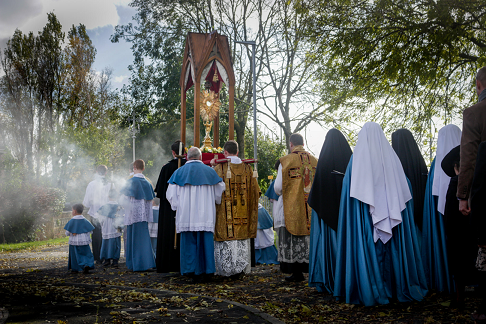 |
 |
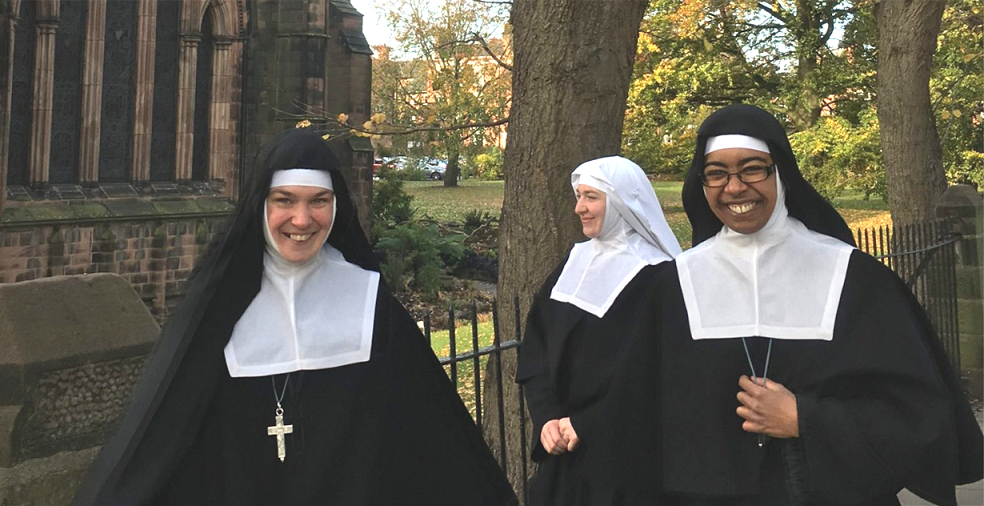 |
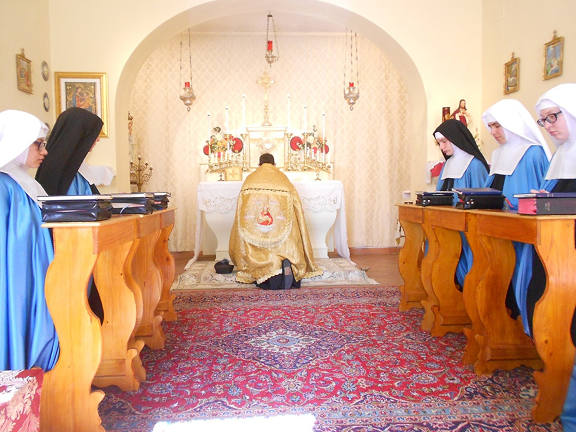
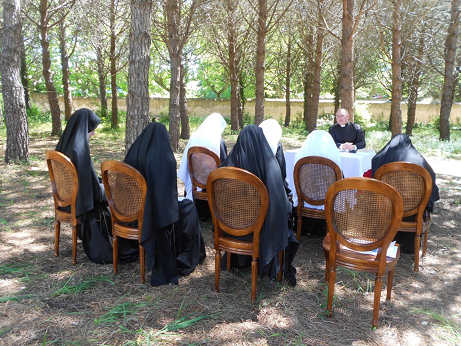
Villa of the Sacred Heart, Livorno, Italy
This Italian villa with a large, enclosed garden is located in the working seaport town of Livorno, about a half-hour southeast of Pisa. In addition to adoration of the Blessed Sacrament, the chant of the Divine Office, and singing the Mass in the nearby apostolate, this house is also specially dedicated to sewing ecclesiastical garments for the Institute’s priests and seminarians.
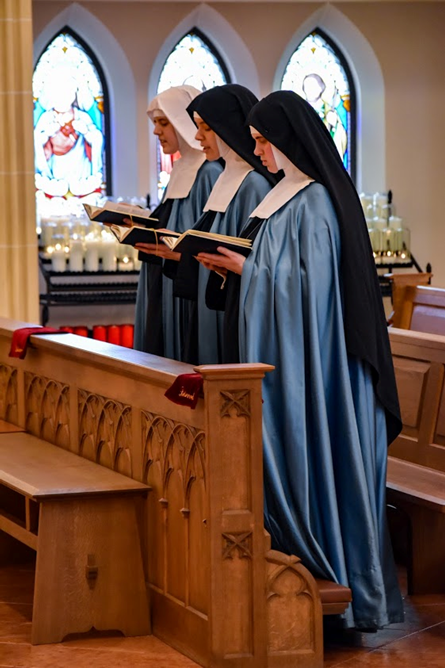
Convent of the Nativity of the Blessed Virgin Mary, Wausau, Wisconsin
On All Saints’ Day 2019, the sisters had the immense grace of opening their first foundation in the United States. The Most Reverend William Callahan, Bishop of La Crosse, invited the sisters into his diocese and came to bless the chapel and the house on its inauguration. From adoration of the Blessed Sacrament and singing for Holy Mass, to children’s catechism and summer camps, the sisters are now a precious element of parish life at St Mary’s Oratory in Wausau.
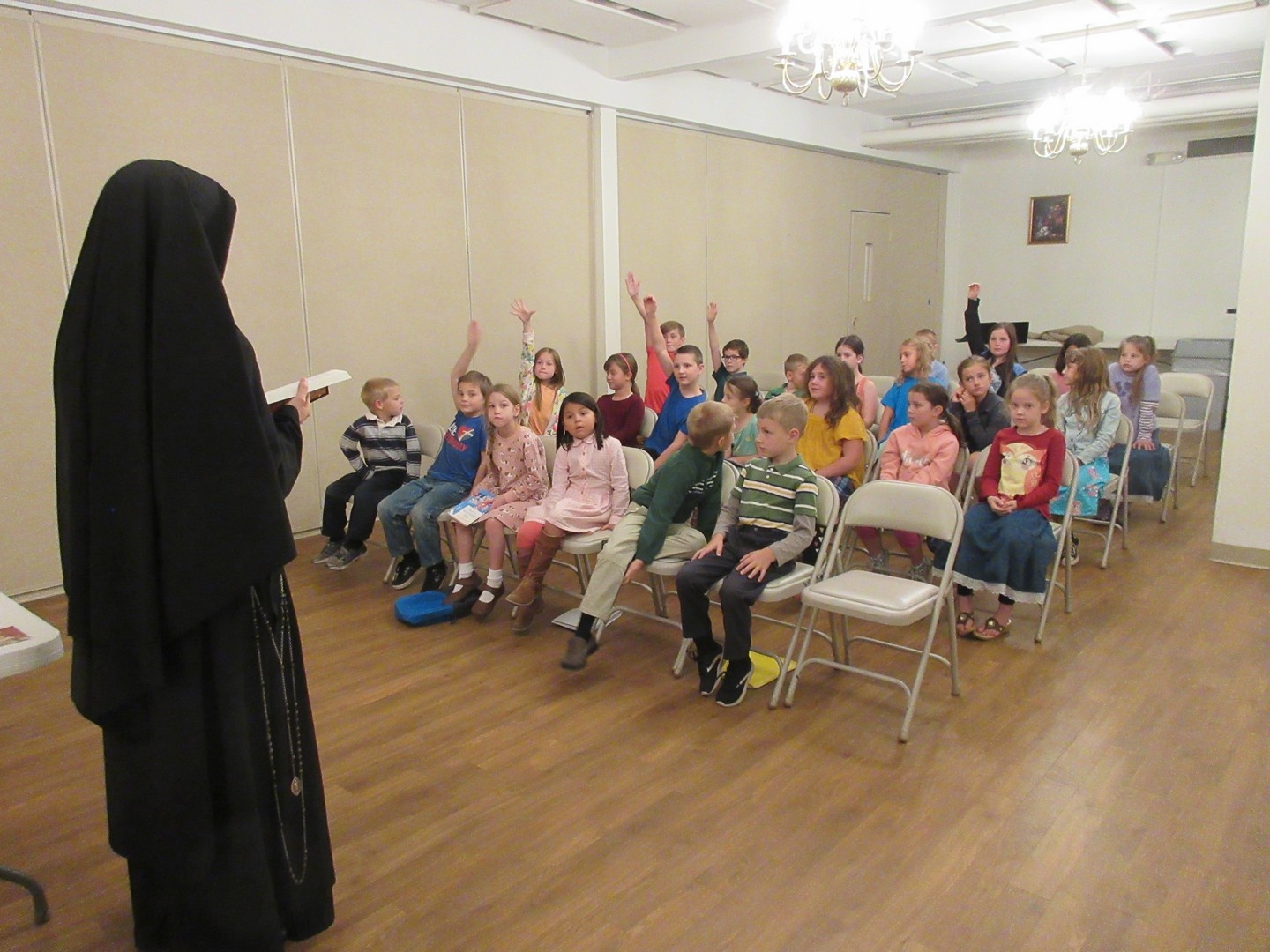 |
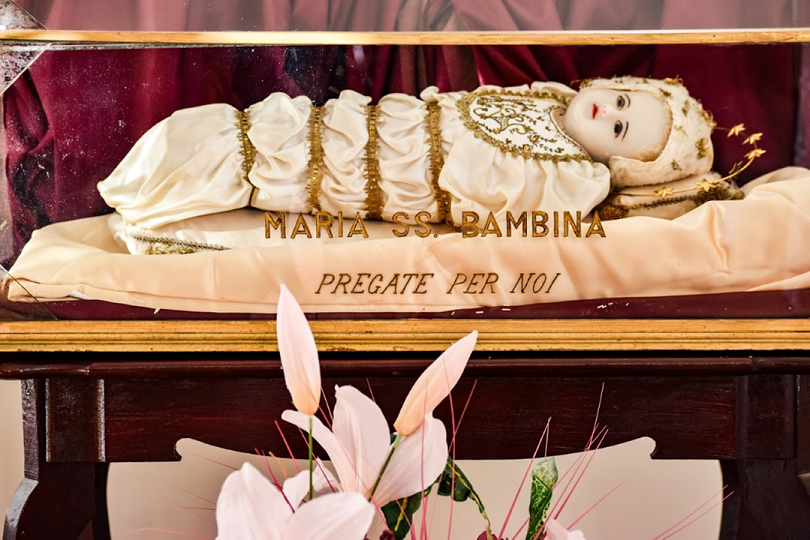 |
House of Our Lady of the Most Holy Rosary, Ireland
In these challenging times for the once faith-filled country of Ireland, the Sister Adorers had the grace of opening a new house in County Louth in 2020. For-merly the Convent of Mercy, this beautiful edifice and expansive grounds have already been the home to girls’ summer camps run by the sisters.
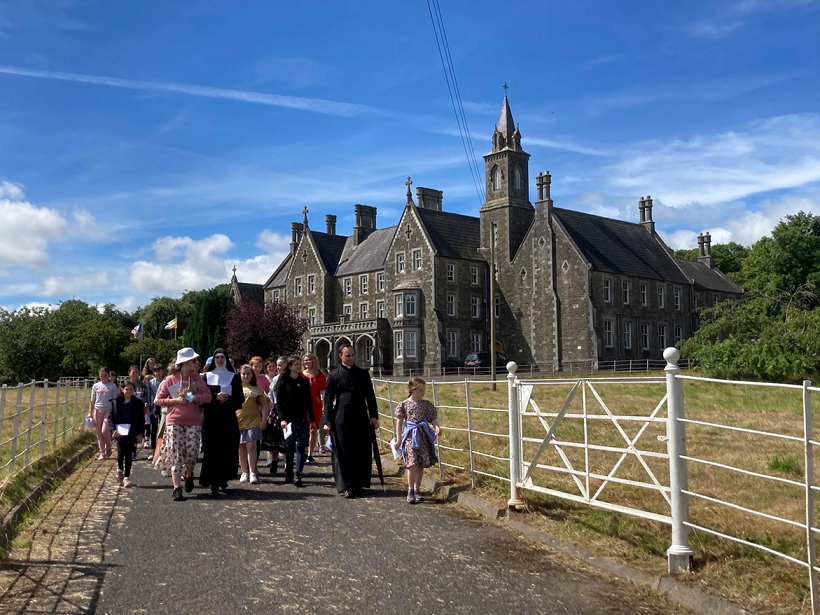 |
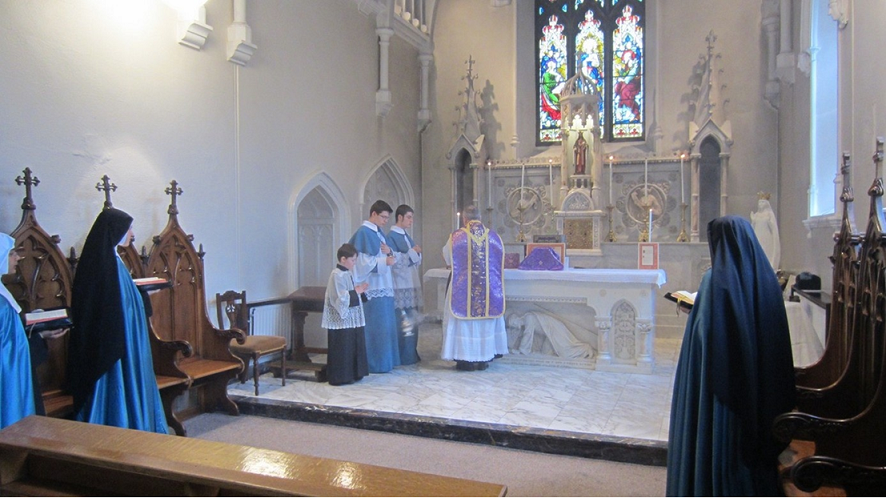 |
- Institute
Contact
Contact Our U.S. Provincial Headquarters
To get in touch with the Institute's U.S. Provincial Headquarters in Chicago, please use the contact information below.
Contact Information
| Address: | Institute of Christ the King 6415 S. Woodlawn Ave. Chicago, Illinois 60637-3817 USA |
| Phone: | 773-363-7409 |
| Fax: | 773-363-7824 |
| Email: | This email address is being protected from spambots. You need JavaScript enabled to view it. |
- Institute
Contact
Contact Our U.S. Provincial Headquarters
To get in touch with the Institute's U.S. Provincial Headquarters in Chicago, please use the contact information below.
Contact Information
| Address: | Institute of Christ the King 6415 S. Woodlawn Ave. Chicago, Illinois 60637-3817 USA |
| Phone: | 773-363-7409 |
| Fax: | 773-363-7824 |
| Email: | This email address is being protected from spambots. You need JavaScript enabled to view it. |
- Institute
Frequently Asked Questions
Frequently Asked Questions
Below are common questions that we are asked. If you have other questions, please search for that topic at right or contact us. For questions particular to vocations, see the Frequent Vocations Questions page.
Institute in the United States
Where are the Institute's headquarters in the United States?
The Institute's US headquarters are located in Chicago, Illinois, at the Shrine of Christ the King Sovereign Priest. The church is an historic landmark, and funds are currently being sought for its restoration.
How many locations does the Institute operate in the US?
In the US, we currently have 13 apostolates, many of where we already serving several hundred faithful with the beautiful Traditional Latin Mass. The United States is fruitful ground for our traditional apostolate.
A list of our locations is on the sidebar at right. You may learn more about these apostolates on their respective pages.
Does the United States have a formation house in the US?
Due to the ever-growing number young American men that join the formation program as seminarians or oblates, the Institute has implemented for several years a special pre-seminary program that prepares these young men for entry into our International Seminary near Florence, Italy. This pre-formation program is concentrated at St. Francis de Sales Oratory in St. Louis, Missouri, but we also have young men in training at other apostolates throughout the US. The American candidates for the oblatehood are all trained in our American houses.
About the Institute
Does the Institute have its own seminary?
Yes. Located in the Archdiocese of Florence, Italy, it is named St. Philip Neri Seminary. You may learn more on the International Seminary page.
What is the location of the Institute's seminary and motherhouse?
The Institute's motherhouse is located in located in Gricigliano, Italy, near Florence in Tuscany. The motherhouse also serves as the Institute's seminary, where young men are formed for the priesthood and minor orders.
What is the Institute's mission statement?
"The mission of the Institute of Christ the King Sovereign Priest is to spread the reign of Christ in all spheres of human life by drawing from the millennial treasury of the Roman Catholic Church, particularly her liturgical tradition, the unbroken line of spiritual thought and practice of her saints, and her cultural patrimony in music, art and architecture. The Institute accomplishes this primarily through a solid and well-rounded formation of its priests, rooted in Catholic tradition and carried out at its international seminary in the Archdiocese of Florence. Our priests, conscious of the need for their own sanctification, strive to be instruments of God's grace through their apostolic work discharged in the churches assigned to the Institute, its schools, its missions in Africa, by preaching retreats, teaching catechesis, and providing spiritual guidance. The Institute of Christ the King operates under the patronage of the Immaculate Conception, to Whom it is consecrated."
You may also be interested in the Shrine of Christ the King's mission statement (PDF).
What sort of active apostolate does the Institute exercise?
In addition to serving the spiritual needs of the faithful from day to day through the celebration of Holy Mass, hearing confessions, administering the Sacraments to the dying and infirm, teaching catechism, etc., the Institute also offers spiritual retreats, and organizes activities for youth, especially summer camps, and operates schools (in Lille and Montpellier in France and in Brussels, Belgium). There has been rapid growth of the Institute in locations across our nation, and the Institute will continue with the help of Divine Providence to develop here in the United States the broad spectrum of its apostolate as it seeks to promote the Reign of Christ for people of all ages and walks of life. The Institute also has several missions in Africa, where its missionary priests work amid very difficult conditions to bring the truth and charity of Christ the King to those souls who do not yet know Him.
Who belongs to the Institute?
The Institute of Christ the King is a society of apostolic life which has a whole range of possibilities for membership.
Currently, we have about 50 priests who are full members of the Institute, but there is also the possibility for priests incardinated in a diocese to become affiliated with the Institute and thus share in its spirituality without any further canonical bonds.
The Institute of Christ the King also has a growing number of non-ordained members that help our priests in their apostolic life, similar to the way of religious brothers. Our oblates, as we call them, are working with their respective talents and are members of the clergy in a broader sense through the minor orders they receive during their training.
Fledgling members of the Institute are our seminarians, which count 80 worldwide. For two years, the Institute has also had a female branch called the Sisters Adorers of the Royal Heart of Jesus and already count 14. In addition, the Society of the Sacred Heart offers the laity an association with the spirituality of the Institute and has already assembled hundreds of our friends under the patronage of the Sacred Heart and the Immaculate Conception.
Is the Institute a French community?
No, it is not. Msgr. Gilles Wach, the founder and prior general of the Institute, being himself of French origin but trained in Italy, has always stressed that the Institute is neither French, German, English, Swedish, Italian, American, nor European, African, nor Asian, but Roman Catholic. Next to Latin, which is used for the sacred liturgy, French is our common language, used for studies and conversation. This gives our members exposure to at least one other modern language and makes it easier for everyone to communicate with the founder for the sake of becoming exposed to the proper charism of the Institute. Most of our seminarians also speak English well, and many are eager to learn more languages, such as Italian or German, which is not obligatory.
Does the Institute have a preference for the baroque style?
Beauty is the outward expression of truth's perfection. Although the richness of the baroque style admirably expresses the sublimity of the divine truths of our Faith, there are also other artistic styles which, each in their own way, contribute to give us a little glimpse of the heavenly beauty of the eternal Truth. For example, the Institute's church in Wausau, Wisconsin, Saint Mary's Oratory, which enshrines a beautiful statue of the Virgin and Child which dates back to the 1470's, has undergone complete restoration in an authentic Gothic style. The Oratory of Saint Francis de Sales in St. Louis is a very remarkable representation of Neo-Gothic splendor, while the recently restored Old Saint Patrick's Oratory in Kansas City, Missouri, is a fine example of late-period Classical style and architecture.
Why do the Institute priests wear their own choir dress?
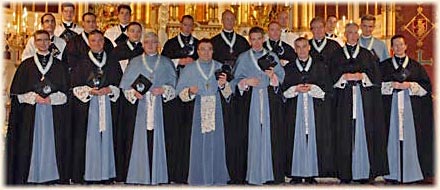 Our American priests and oblates with the superiors of the Institute
Our American priests and oblates with the superiors of the InstituteThe Institute has its own strong identity due to its holy patrons and canonical life. In 1994, the Institute was placed under the patronage of the Immaculate Conception, and since its foundation, it has been inspired by St. Benedict, St. Thomas Aquinas, and especially St. Francis de Sales.
Traditionally, priests living in a community attached to a church and dedicated to the celebration of the solemn Latin liturgy but without religious vows have been called secular canons and were distinguished by their own choir dress.
In 2006, the Cardinal Archbishop of Florence, responsible for the overview of the Institute's life, bestowed upon our priests and oblates their specific choir dress. The choir dress consists of a rochet, a mozzetta, the cross of St. Francis de Sales on a blue and white ribbon, and a biretta with a blue pom-pom. The superiors have a blue mozetta, the priests have a black mozetta with blue piping, and the oblates wear the cross and ribbon on the surplice. The blue stands for our complete dedication to the Blessed Mother and is traditionally the color shown on St. Francis de Sales in most paintings of him. The choir dress expresses the strong unity, spiritually, and identity of the Institute and adds solemnity to the liturgy.
What does the Institute's coat of arms symbolize?
The motto of the Institute is expressed in its coat of arms. At the service of Christ the King, the Institute is totally committed to working for His Reign over the minds and hearts of all people. Thus the globe, or orbis, represents the universal Kingship of Christ. This globe, or orbis, is set on a blue background, since Our Lady of the Immaculate Conception is the principal Patron of the Institute, and all of its members are especially consecrated to her. The fleur de lys, symbol of purity, further expresses the patronage of Our Lady of the Immaculate Conception, while being at the same time, the symbol of the city of Florence, near which the Motherhouse and Seminary of the Institute are located.
- Institute
Frequently Asked Questions
Frequently Asked Questions
Below are common questions that we are asked. If you have other questions, please search for that topic at right or contact us. For questions particular to vocations, see the Frequent Vocations Questions page.
The Institute in the United States
Where are the Institute's headquarters in the United States?
The Institute's US headquarters are located in Chicago, Illinois, at the Shrine of Christ the King Sovereign Priest. The church is a historic landmark, and funds are currently being sought for its restoration.
How many locations does the Institute operate in the United States?
In the US, we currently have 13 apostolates, many of where we already serving several hundred faithful with the beautiful Traditional Latin Mass. The United States is fruitful ground for our traditional apostolate.
A list of our locations is on the sidebar at right. You may learn more about these apostolates on their respective pages.
Does the United States have a formation house in the United States?
Due to the ever-growing number young American men that join the formation program as seminarians or oblates, the Institute has implemented for over a decade a special pre-seminary candidacy program that prepares these young men for entry into our International Seminary near Florence, Italy.
This pre-seminary candidacy program is concentrated at several apostolate houses throughout the United States, including Wisconsin, Connecticut, and Michigan.
The American candidates for the oblatehood are all trained in our American houses.
About the Institute
Does the Institute have its own seminary?
Yes. Located in the Archdiocese of Florence, Italy, it is named St. Philip Neri Seminary. You may learn more on the International Seminary page.
What is the location of the Institute's seminary and motherhouse?
The Institute's motherhouse is located in located in Gricigliano, Italy, near Florence in Tuscany. The motherhouse also serves as the Institute's seminary, where young men are formed for the priesthood and minor orders.
What is the Institute's mission statement?
The mission of the Institute of Christ the King Sovereign Priest is to spread the reign of Christ in all spheres of human life by drawing from the millennial treasury of the Roman Catholic Church, particularly her liturgical tradition, the unbroken line of spiritual thought and practice of her saints, and her cultural patrimony in music, art and architecture.
The Institute accomplishes this primarily through a solid and well-rounded formation of its priests, rooted in Catholic tradition and carried out at its international seminary in the Archdiocese of Florence.
Our priests, conscious of the need for their own sanctification, strive to be instruments of God's grace through their apostolic work discharged in the churches assigned to the Institute, its schools, its missions in Africa, by preaching retreats, teaching catechesis, and providing spiritual guidance.
The Institute of Christ the King operates under the patronage of the Immaculate Conception, to Whom it is consecrated.
What sort of active apostolate does the Institute exercise?
In addition to serving the spiritual needs of the faithful from day to day through the celebration of Holy Mass, hearing confessions, administering the Sacraments to the dying and infirm, teaching catechism, etc., the Institute also offers spiritual retreats, and organizes activities for youth, especially summer camps, and operates schools (in Lille and Montpellier in France and in Brussels, Belgium).
There has been rapid growth of the Institute in locations across our nation, and the Institute will continue with the help of Divine Providence to develop here in the United States the broad spectrum of its apostolate as it seeks to promote the Reign of Christ for people of all ages and walks of life.
The Institute also has several missions in Africa, where its missionary priests work amid very difficult conditions to bring the truth and charity of Christ the King to those souls who do not yet know Him.
Who belongs to the Institute?
The Institute of Christ the King is a society of apostolic life which has a whole range of possibilities for membership.
Currently, we have over 130 priests who are full members of the Institute, but there is also the possibility for priests incardinated in a diocese to become affiliated with the Institute and thus share in its spirituality without any further canonical bonds.
The Institute of Christ the King also has a growing number of non-ordained members that help our priests in their apostolic life, similar to the way of religious brothers. Our oblates, as we call them, are working with their respective talents and are members of the clergy in a broader sense through the minor orders they receive during their training.
Fledgling members of the Institute are our seminarians, which count over 100 worldwide. For two years, the Institute has also had a female branch called the Sisters Adorers of the Royal Heart of Jesus and already count over 60 members. In addition, the Society of the Sacred Heart offers the laity an association with the spirituality of the Institute and has already assembled hundreds of our friends under the patronage of the Sacred Heart and the Immaculate Conception.
Is the Institute a French community?
No, it is not. Msgr. Gilles Wach, the founder and prior general of the Institute, being himself of French origin but trained in Italy, has always stressed that the Institute is neither French, German, English, Swedish, Italian, American, nor European, African, nor Asian, but Roman Catholic.
Next to Latin, which is used for the sacred liturgy, French is our common language, used for studies and conversation. This gives our members exposure to at least one other modern language and makes it easier for everyone to communicate with the founder for the sake of becoming exposed to the proper charism of the Institute.
Most of our seminarians also speak English well, and many are eager to learn more languages, such as Italian or German, which is not obligatory.
Does the Institute have a preference for the baroque style?
Beauty is the outward expression of truth's perfection. Although the richness of the baroque style admirably expresses the sublimity of the divine truths of our Faith, there are also other artistic styles which, each in their own way, contribute to give us a little glimpse of the heavenly beauty of the eternal Truth.
For example, the Institute's church in Wausau, Wisconsin, Saint Mary's Oratory, which enshrines a beautiful statue of the Virgin and Child which dates back to the 1470's, has undergone complete restoration in an authentic Gothic style. Saint Francis de Sales Oratory in St. Louis is a very remarkable representation of Neo-Gothic splendor, while the recently restored Old Saint Patrick's Oratory in Kansas City, Missouri, is a fine example of late-period Classical style and architecture.
Why do the Institute priests wear their own choir dress?
The Institute has its own strong identity due to its holy patrons and canonical life. In 1994, the Institute was placed under the patronage of the Immaculate Conception, and since its foundation, it has been inspired by St. Benedict, St. Thomas Aquinas, and especially St. Francis de Sales.
Traditionally, priests living in a community attached to a church and dedicated to the celebration of the solemn Latin liturgy but without religious vows have been called secular canons and were distinguished by their own choir dress.
In 2006, the Cardinal Archbishop of Florence, responsible for the overview of the Institute's life, bestowed upon our priests and oblates their specific choir dress. The choir dress consists of a rochet, a mozzetta, the cross of St. Francis de Sales on a blue and white ribbon, and a biretta with a blue pom-pom. The superiors have a blue mozetta, the priests have a black mozetta with blue piping, and the oblates wear the cross and ribbon on the surplice. The blue stands for our complete dedication to the Blessed Mother and is traditionally the color shown on St. Francis de Sales in most paintings of him. The choir dress expresses the strong unity, spiritually, and identity of the Institute and adds solemnity to the liturgy.
 Our American priests and oblates with the superiors of the Institute
Our American priests and oblates with the superiors of the Institute
What does the Institute's coat of arms symbolize?
The motto of the Institute is expressed in its coat of arms. At the service of Christ the King, the Institute is totally committed to working for His Reign over the minds and hearts of all people.
Thus the globe, or orbis, represents the universal Kingship of Christ.
This globe, or orbis, is set on a blue background, since Our Lady of the Immaculate Conception is the principal Patron of the Institute, and all of its members are especially consecrated to her.
The fleur de lys, symbol of purity, further expresses the patronage of Our Lady of the Immaculate Conception, while being at the same time, the symbol of the city of Florence, near which the Motherhouse and Seminary of the Institute are located.

